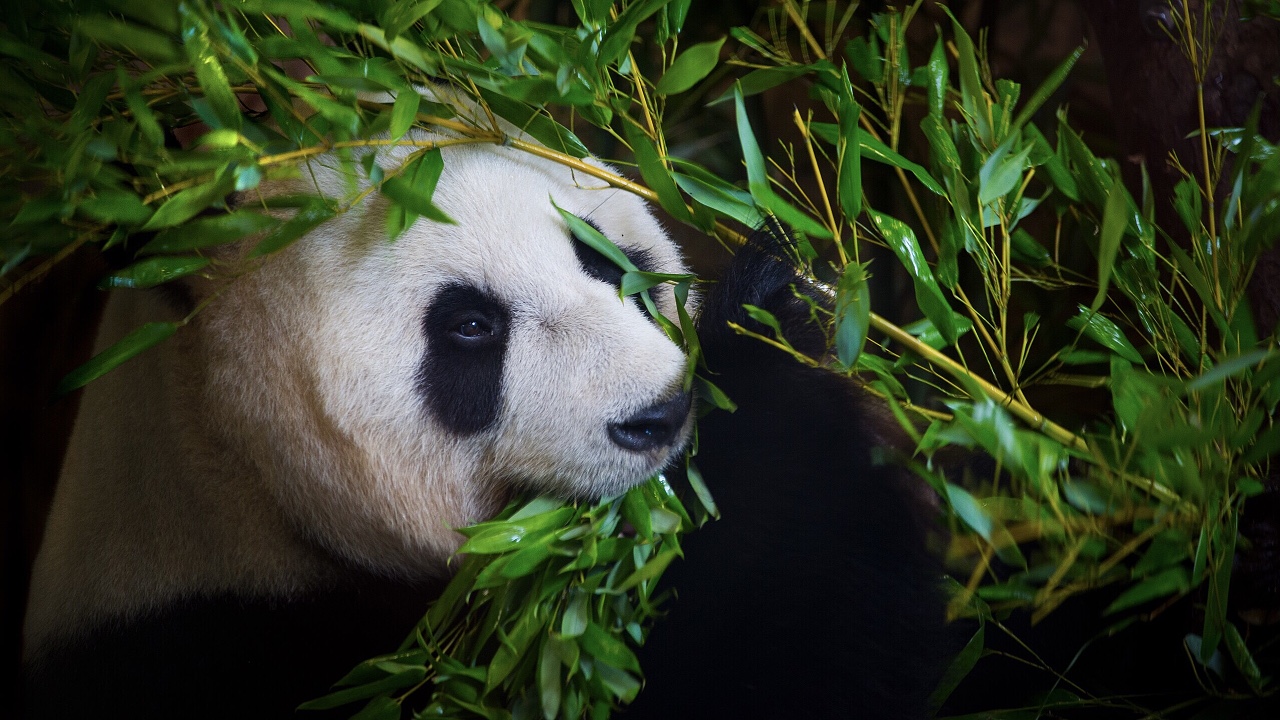13 Endangered Species Brought Back From the Edge of Extinction

Although human activity is directly responsible for most animals ending up on the endangered species list, conservation efforts have brought several endangered creatures back from the brink of extinction.
According to the U.S. Geological Survey, although some animal species become extinct naturally, most do so as a result of habitat loss, the introduction of invasive species, diseases, or exploitation by people for commercial purposes.
We didn’t take action in time to save the passenger pigeon, dodo, great auk, or woolly mammoth, but captive breeding, habitat preservation, and other efforts have saved the following endangered species from extinction.
Bald Eagle

The majestic bald eagle is a fish-eating bird of prey that remains the national symbol of the United States.
According to the Environmental Defense Fund, an estimated 100,000 bald eagles soared over the young United States in the 1700s. By the 1960s, there were less than 500 pairs due in large part to our use of the toxic insecticide DDT.
Conservation efforts and the banning of DDT in 1972 helped bald eagle numbers increase dramatically. Although still protected, the United States removed the bird from the endangered species list in 2007.
Humpback Whale

The humpback whale is a type of baleen whale that is sought after by whale watchers due to the humpbacks’ tendency to breach while feeding. Adults can grow up to 52 feet long and weigh up to 50 tons.
According to the Endangered Species Coalition, commercial whaling reduced humpback whale numbers to approximately 10,000 in the 1960s. Thanks to the Marine Mammal Protection Act and a ban on commercial whaling in many parts of the world, there are now between 80,000 to 135,00 humpbacks swimming free in our oceans today. Although they still face challenges, they are no longer listed as an endangered species.
American Bison

An estimated 30 million American bison, or buffalo, once roamed North America hundreds of years ago. Native Americans have a long history and spiritual bond with the iconic animal.
As White European settlers pushed west, they nearly hunted the American bison to extinction. According to the Nature Conservancy, by 1905 there were only 835 wild bison and 256 captive bison remaining.
Thanks to conservation efforts and protected lands, today there are approximately 350,000 American bison roaming the United States. Although this is only a small percentage of their original numbers, there are enough individuals for the International Union for Conservation of Nature (IUCN) to remove them from the endangered species list.
American Alligator

The American alligator is the largest reptile in the United States and has walked the Earth for about 200 million years. The ancient predator lives in the southeastern U.S. and is the official state reptile of Florida, Louisiana, and Mississippi.
Americans love a comeback story, and as far as endangered species are concerned, the American alligator is the biggest star. Habitat loss, overhunting, and pollution brought the American alligator dangerously close to extinction in the 1950s.
After Florida banned hunting alligators in 1962 and the federal government protected them in 1966, the crocodilians’ numbers bounced back. Today there are an estimated five million American alligators lurking in U.S. swamps and wetlands. Gators are no longer listed as an endangered species, which is why alligator jerky is a thing at convenience stores in the southeastern United States.
Giant Panda

The giant panda is a black-and-white bear species endemic to China with a diet consisting almost entirely of bamboo shoots. Giant pandas are unique for having a thumb on each of their forepaws that allows them to sit upright and hold bamboo to munch on.
Farming and deforestation in China led to a giant panda population decline and landed the gentle bears on the endangered species list. Thanks to conservation efforts and captive breeding programs, the IUCN upgraded their status to “vulnerable.”
Today there are 1,864 giant pandas in their native habitat and another 600 or so in captivity. After a few years of icy U.S.-China relations, the giant panda exchange program resumed in 2024 with the San Diego Zoo receiving two giant pandas on loan.
California Condor

The California condor is the largest North American land bird and one of the rarest birds in the world. Native Americans called it the thunderbird because they believed the beating of the bird’s huge wings could draw thunder from clouds.
Due to DDT, poaching, pollution, and habitat destruction, these misunderstood, not-exactly-cute birds went extinct in the wild in 1987 when the 27 remaining birds were collected and kept in captivity for their safety.
Today, although the California condor is still listed as critically endangered, animal conservationists have gradually reintroduced the bird to its native habitat since 1991. Today there are 560 condors in the wild and captivity. Although they have a face for radio, take a picture of this rare animal if you happen to see one at a zoo or in the wild.
Gray Wolf

Gray wolves used to roam the entirety of North America, from Mexico all the way to Alaska. By the 1950s, habitat loss and hunting made them nearly disappear from the 48 contiguous states.
Thanks to the 1973 Endangered Species Act, gray wolves clawed their way back. There are now an estimated 7,500 gray wolves in the lower 48 states, plus an additional 7,000 to 11,000 in Alaska. Worldwide, there are between 200,000 and 250,000 gray wolves, prompting the IUCN to list the canine species as one of “least concern.” Now that’s news to howl at the Moon about!
Green Sea Turtle

Found in waters all around the globe, the green sea turtle is the largest hard-shelled sea turtle in the world. Listed as endangered by the IUCN, the gentle algae-eating reptiles face unique challenges due to their need to lay their eggs on specific sandy beaches.
Green sea turtles were exploited by humans for their meat and eggs, which led to a decline in numbers. In addition, pollution, getting caught in nets, and human activity on their nesting beaches seemingly sealed their fate.
Today, many countries, including the United States, protect the green sea turtle and its nesting areas. There are an estimated 500,000 to 1 million green sea turtles swimming through ocean waters around the globe, but their numbers have bounced back most in areas where they are protected, like in the United States.
Mountain Gorilla

The mountain gorilla, a subspecies of the eastern gorilla, is an endangered African gorilla that is the subject of the 1988 movie Gorillas in the Mist starring Sigourney Weaver.
Due to illegal poaching, disease, and habitat loss, the population of mountain gorillas dwindled to a low point of 254 individuals in 1981. Thanks to protected areas partially funded by tourism revenue, there are now approximately 1,000 gorillas in the misty mountains of central Africa.
West Indian Manatee

The West Indian manatee is a gentle aquatic mammal that swims the warm coastal waters of the southeastern United States looking for aquatic plants to graze on, a behavior that earned it the nickname “sea cow.”
Manatees were once listed as endangered due to pollution, habitat loss, and collisions with boats. In 2017, the U.S. Fish and Wildlife Service downlisted the West Indian manatee to “threatened” due to conservation efforts and an increase in numbers. Whereas there were only a few hundred animals in Florida waters in the 1970s, today there are more than 6,000.
Siberian Tiger

The Siberian tiger is a species closely related to the extinct Caspian tiger. The former big cat is endemic to the Russian Far East and Northeast China.
Deforestation, a decline in prey animals, and illegal poaching resulted in less than 30 Siberian tigers left in the wild in the 1930s before conservation efforts began. Today, there are an estimated 1,000 Siberian tigers in the wild with an additional 4,000 in captivity, some of which are later reintroduced into their native habitat.
California Sea Otter

The California sea otter, Enhydra lutris nereis, lives along the central California coastline. Although there were once an estimated 150,000 to 300,000 sea otters swimming and diving for sea urchins in the North Pacific Ocean in the 1700s, humans hunted the marine mammals for their pelts and sea otter numbers crashed to only about a few thousand individuals by 1911.
The U.S. Fish and Wildlife Service listed the California sea otter as threatened in 1977. Although there are about 3,000 sea otters swimming in coastal areas such as Morro Bay today, their numbers have plateaued. An increase in sharks, which eat California sea otters, is part of the reason that the little mammals have struggled to bounce back, but humans also need to continue to protect them and the otters’ food sources.
Przewalski’s Horse

Przewalski’s horse is a wild horse named after Russian explorer Nikolay Przhevalsky. Native to the steppes of Central Asia, Przewalski’s horse went extinct in the wild in the 1960s.
Thanks to captive breeding and reintroduction programs, there are now approximately 2,500 Przewalski’s horses living in the wild today, with additional animals in captivity. This is remarkable considering that in the mid-20th century, there were less than 40 of these wild horses left on the planet.





